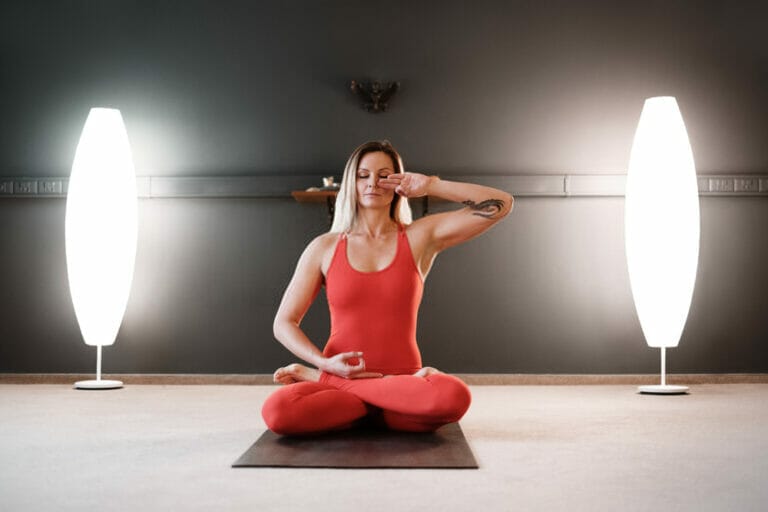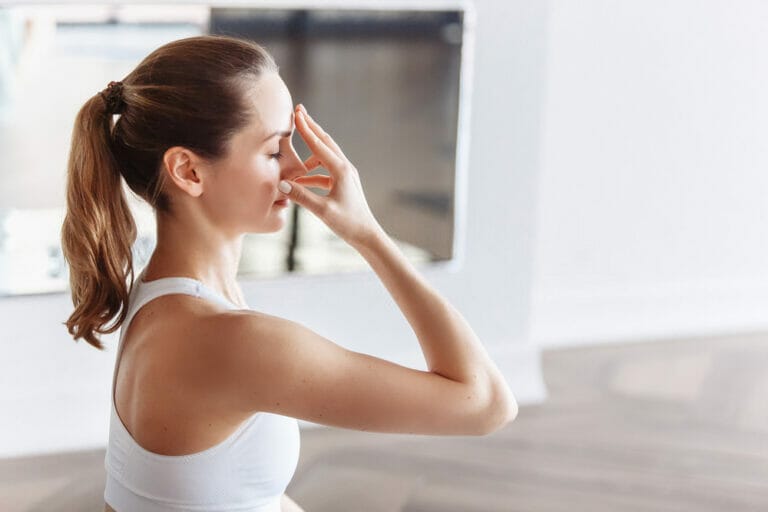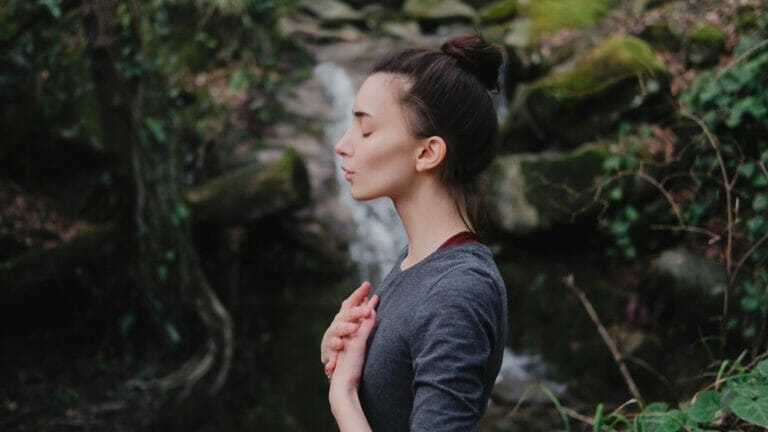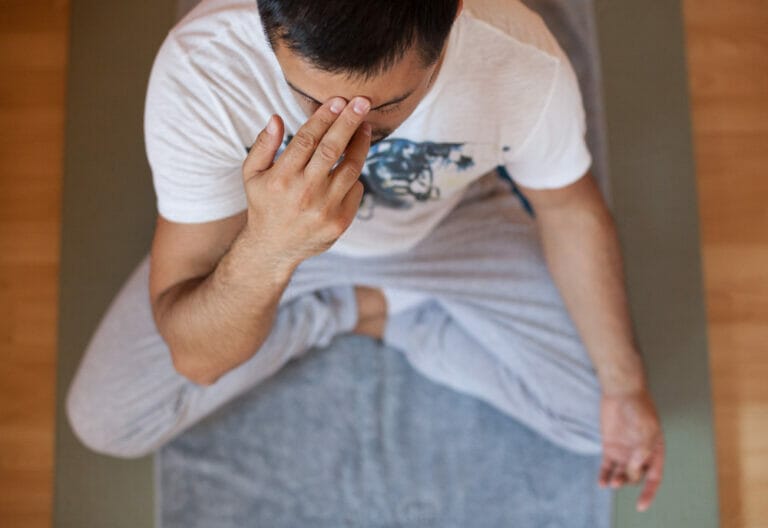What Is Bhramari or Bee Breath Pranayama – All Explained!
It is a breath of fresh air for anyone who has tried to learn how to do Bhramari Pranayama.
The bee breath technique is an ancient and effective pranayama practice that works by creating a humming sound with your breath.
It's a type of breathing technique that is said to bring peace, clarity, and calmness. Bhramari is calming and can be a powerful breathing exercise for those who suffer from stress and anxiety.
In this article, you will learn how to do this pranayama technique the right way, you will discover its benefits, and you’ll also get a chance to hear the sound of the breath for yourself.
What is Bhramari Pranayama?
The word “Bhramari” translates to “bee” in English, and therefore, Bhramari Pranayama is commonly referred to as bee breath. When you do this breathing technique properly, you will hear sound vibrations like a buzzing or humming noise similar to a bee’s buzzing.
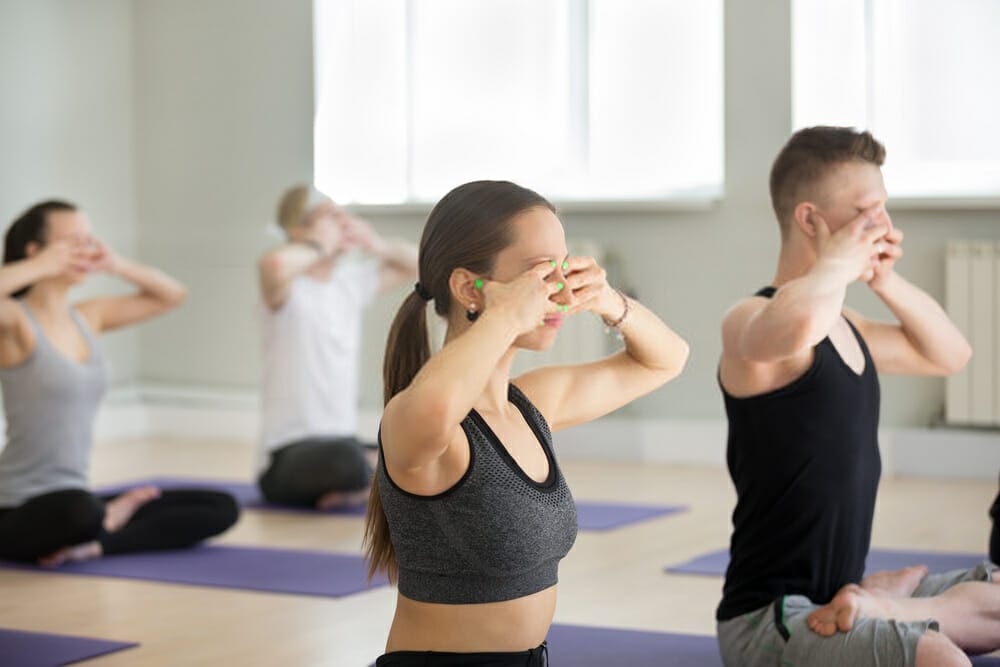
When done daily, one can positively impact his mind by reducing tension, exhaustion, and high blood pressure.
This method is also beneficial for ear, nose, mouth, and eye disorders. After completing Anulom Vloma Pranayama, we usually practice Bhramari Pranayama to get the most out of it.
Bhramari is one of the Pranayama techniques outlined in Swami Swatmarama's 15th-century classic The Hatha Yoga Pradipika.
The Bee Breath is also mentioned in the old yogic text, The Yoga Sutras of Patanjali, as an example of one of the methods of Pratyahara (withdrawal of senses).
How does it help
The Sanskrit word for bee is “Bhramara” and comes from the root word ‘Bhra’ which means to hum or buzz.
The action of the mind when it is excited, anxious, or stressed can be compared to that of a bee flying around searching for nectar.
The bee’s wings beat very fast, so do our thoughts when we are stressed. This Pranayama can help calm your mind by using this buzzing sound effect on the exhales.
Also, when you can create the buzzing sound, you will increase awareness of every breath you take in.
Knowing your breathing will make it much easier to control the length and speed you breathe in and out.
Types of Bhramari Pranayama
You can do Bhramari pranayama in a variety of ways, both modern and traditional.
Although the humming sound is the most basic notion of bhramari breathing, its effect gets enhanced by incorporating various yoga mudras into basic bhramari.
- Basic Bhramari
- Silent Bhramari
- Bhramari with Shanmukhi mudra
How to get started with Bhramari Pranayama
- Find a relaxing spot and sit in any meditative position, such as the lotus pose or easy pose.
- Place a folded blanket under your pelvis to create a natural thigh slope. It allowed the spine to straighten completely.
If you don't feel at ease in a meditative seated position,
- Sit in the chair in this position, with your pelvis supported at the seat’s edge and your spine erect, without resting on the chair’s back.
- Place your feet on the ground (or under yoga blocks if you can’t reach them) and your hands next to your hips.
Recommended Asanas for Bhramari Pranayama
Padmasana/Lotus Pose
Cross your legs and sit comfortably on the floor. The right foot should be on the left thigh, whereas the left foot should be on the right. Bring your feet closer to your body.

Vajrasana /Thunderbolt Pose
Kneel with your legs together, and your big toes are crossing each other. Lower your body to the point where your buttocks are resting on your heels.
The heels should be facing somewhat outward. The thighs should touch the calf.
Sukhasana/Easy Sitting Pos
Sit on the floor with your legs extended out and close together. Maintain a straight and extended spine.

First, fold the left leg inside the right thigh and draw it in. Next, fold the right leg within the left leg and draw it inside the left thigh.
How to do basic bhramari
The ears are closed using index fingers in basic bhramari to block extraneous noise and feel the distinct internalized vibrations produced by the humming sound.
- Sit accordingly.
- Place your index fingers on the ear, focusing on the area between the cheek and the ear. It will not let external noise enter through the ears.
- Inhale deeply, all the way to your abdominal button.
- Close your lips gently and slightly separate your top and lower teeth.
- Begin bhramari breathing by producing humming vibrations (O-hmm). These vibrations will cause a gentle tingling sensation in your mouth, teeth, and jaws.
- Feel the sensations that your body produces. It will assist you in going beyond your physical senses and into your mind.
- Repeat 5-6 times.
Silent bhramari
After basic Bhramari Pranayama, you may do the silent bhramari.
After you've completed the previous style of Pranayama for 5-6 rounds, begin exhaling the air without really making a vibrating sound, but instead thinking about it.
Bhramari with Shanmukhi mudra
After you’ve done basic bhramari and silent bhramari, you can do this style of Pranayama.
- Place your hand on your face and sit comfortably.
- Place your thumbs on the tragus (opening the outer ear) and your forefinger on the inner eye corners.
- Don’t put any strain on your eyes.
- Keep your middle finger sides of your nose and your ring finger over your lips.
- Begin by placing your pinky finger beneath your lips and inhaling and exhaling air.
- Produce a buzzing sound with all of your fingers positioned on your face while exhaling. Feel the peace in your head area while you listen to the humming sound.
- Repeat 5-6 times more.
When to practice bhramari pranayama
You can practice it early in the morning or at night to avoid the noise of the day and relax.
Bhramari Pranayama is also the perfect practice for 30 minutes before sleep because it helps you fall asleep and sleep deeply.
It can help you in building a healthy sleeping pattern and getting good sleep at night.
However, you should not do Bhramari at bedtime or use prescription medications to fall asleep if you have insomnia.
Benefits of Bhramari pranayama
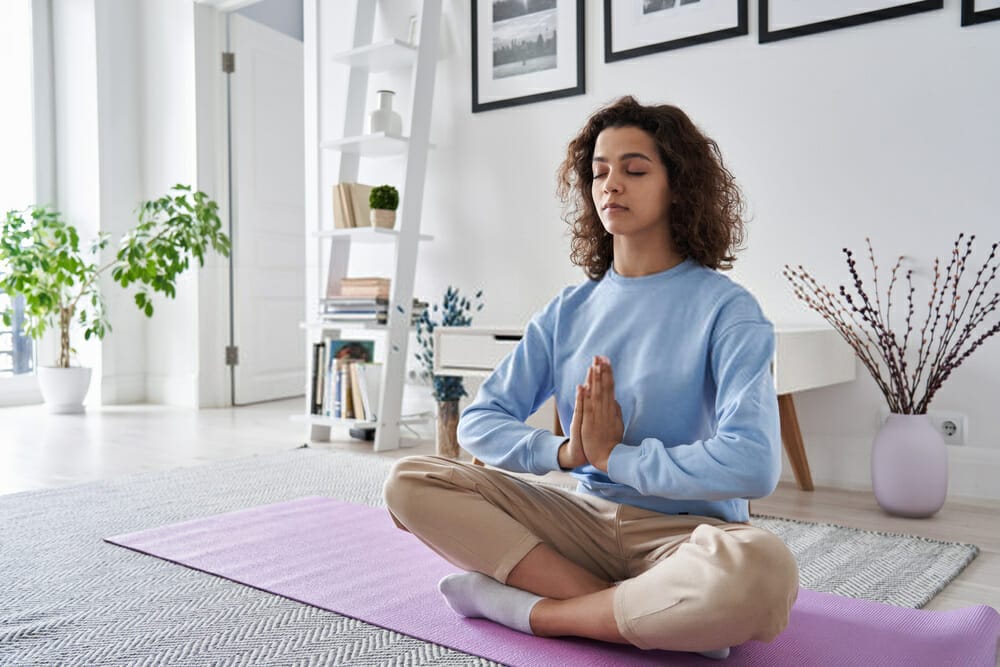
- Changes in the brainwaves: The breathing technique has a strong potential for promoting positive psychological and physiological changes.
Before the practice of Bhramari Pranayama, the bhramari practitioner will ask you to keep your eyes closed, ears covered and sit in a relaxed posture.
After these instructions, you will feel an increase in your brainwave frequency associated with deep relaxation and calmness.
As the practice continues, these brainwaves become higher and higher until they reach Alpha state.
Then, it is said to take the practitioner to a meditative state, where they are relaxed enough to watch their thoughts.
- Relieves insomnia: If you usually have trouble falling asleep at night, this breathing technique may be the perfect solution. Bhramari pranayama produces a steady state of deep relaxation, which can assist you in lowering asleep faster and sleeping deeper.
- Acts as a natural antidepressant: One of the most common mental disorders is depression that causes unhappiness, loneliness, loss of confidence, sadness, anger, etc. You can use Bhramari pranayama as a natural antidepressant.
When you perform this breathing technique, you feel happier and develop a better mood.
- Improves hearing capacity: One study shows that bhramari can improve hearing capacity by improving the inner ear balance. It could be the reason why you feel refreshed after your day’s work.
- Enhances concentration: You can use bhramari pranayama to enhance engagement during tasks that require attention, such as studying, writing assignments, reading books, etc.
It helps you stay focused on the task at hand and perform better because you are more attentive and balanced inside.
- Cures thyroid: When you practice bhramari with Jalandhar bandha, it helps cure thyroid issues in the body. It is a process in which you would make a humming sound while exhaling.
It is how the air is propelled through your throat and larynx and ends by making a buzzing sound in your throat and neck area. This buzzing sound irritates your thyroid gland and makes it function better.
- Helps in fighting infections: Another benefit of bhramari is that it helps fight infections in your body. It stimulates the immune system and gives it a boost, which can fight against bacteria and viruses.
- Helps pregnant women: Bhramari has proven beneficial for pregnant women as this breathing technique helps them improve moods and develop a deeper connection with their unborn child.
- Helps in High blood pressure and heart problems: Bhrāmarī pranayama is beneficial for high blood pressure. It helps to decrease the pulse rate, dilate the blood vessels that supply oxygen to the body tissues, and increase the blood force.
- Helpful in curing Paralysis and migraines: Bhramari has positively impacted people suffering from Paralysis and migraines.
Tips for beginners
- You won’t experience the benefits of Bhramari pranayama unless you have been doing it for at least some time.
- If you have been doing bhramari for a long time, you may experience a new sensation after practising it.
- Whether you do the silent or the humming one, always allow 5-6 minutes to let your body rest after each round.
- Afterwards, drink a lot of water so that your body can return to normalcy.
- While practising Bhramari pranayama, one tends to have a headache because of the sound coming out of their ears.
It happens because the difference in the pressure inside your ears is significantly less when compared to that outside. To avoid this, you can try plugging your ear with your fingers.
Certain people with high blood pressure are advised not to practice this breathing technique regularly.
- If you are performing Bhramari pranayama for relaxation, preferably do it in the mornings or evenings.
Precautions
- Make sure you don’t put your finger or thumb into the ear, only on the cartilage.
- Avoid putting too much pressure on the ear’s cartilage. Instead, press lightly on the cartilage, then release the finger or thumb.
- Make sure your mouth is closed while creating the humming sound.
- Always perform this Pranayama in a seated position and never on your back.
- If you have an ear infection, wait until the infection is gone before using this Pranayama.
- When performing this Pranayama, people with cardiac problems should avoid holding their breath.
- It’s preferable if you don’t strain your breathing.
Conclusion
This breathing technique is an ancient practice and helps you achieve a more calm, relaxed mind. It also has physical advantages by stimulating some of your body’s major organs.
However, if you are performing this technique for the first time, make sure to ask your physician whether it is right for you or not.
We highly recommend that one seeks guidance under the supervision of an experienced Yoga teacher when beginning any new yoga practice. Remember to take it slow and easy at first until you get used to this breathing technique.
Give Bhramari Pranayama a try if you are looking for a calming breathwork tool to help you fall asleep faster, relieve insomnia, improve your concentration, and so much more!
FAQs
Is it possible to practice Bhramari pranayama after eating?
You should do Pranayama before eating for at least 30 minutes and after eating for 4 to 5 hours. It’s best if you do it first thing in the morning.
How long should you do it?
You should do Bhramri Pranayama at least 3 to 5 times a day, but more is better. Take a deep breath in and try to hold it for more than 15 seconds while exhaling loudly like a bee.
Can I do Bhramari Pranayama while standing?
You can do Bhramari Pranayama while standing, but you should remain relaxed and focused on your breathing.
It's best if you sit cross-legged with a straight spine and close your eyes after inhaling and exhaling loudly.


